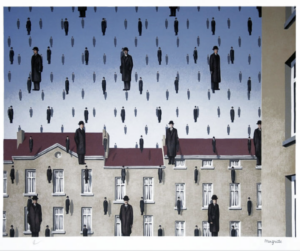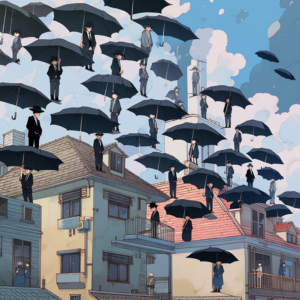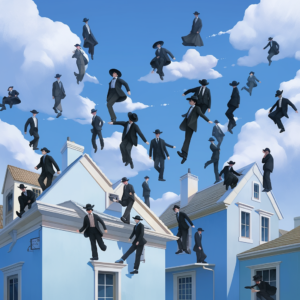How zombie campaigns push Performance Max harder.
By Michael Blake, Senior Performance Manager, and Joanne Shin, Performance Manager, at ...

Stephen Thaler’s AI-generated artwork cannot be copyrighted. Stephen Thaler and/or Creative Machine.
SA train tunnel overgrown with flowers. I thought it looked kind of cool, and, with its unusual blend of constituent components, was worthy of being called an original image – and by consequence a copyrightable image. Judge Beryl A. Howell wasn’t convinced and decided in favour of the decision by the US Copyright Office to deny the work copyright. Judge Howell decreed that copyright could not be granted to a work that was “absent any guiding human hand.”
The AI image, entitled A Recent Entrance to Paradise, was created by Stephen Thaler using the Creativity Machine algorithm. With the court case judgement going against the image, it seems there exists some vagueness around what constitutes an ‘original’ creation. But I can’t help but think that whatever method the artist used, whether AI, or photoshop, or collage, the end image is clearly what I’d define as an ‘original’ creation. It’s the inspired juxtaposition of two disparate images – the train track and the layer of flowers – that convince me Thaler’s vision is unique. And warrants being granted a copyright.

Consider Magritte’s bowler-hatted men floating in the sky in ‘Golconde’. Magritte could, with all validity, have created that arresting image with AI – and claimed its originality because no-one else had thought to make that unique combination. It so happens that when he created the image, paint and canvas were tools de rigueur. My read on the judgement against the ‘Paradise’ train tunnel is that we’re in the early days of litigation with AI.
I was reminded me of George Harrison being found guilty of plagiarism by an over-zealous judge. ‘My Sweet Lord’ purported to have echoes of ‘He’s So Fine’. Yes, there were some possible traces in the chord progressions, but the overall originality of My Sweet Lord as a complete offering was sublimely unique. Compare Harrison’s adverse treatment in those early days of music copyright with todays’ blatant sampling of entire riffs.
I thought, too, about the early days of cameras and photography. They were treated with suspicion – deniers and traditionalists claiming their output could never be considered artistic.
Generative AI is out there shaking things up in every field of the arts. There are ‘novels’ now being created where the ‘originators’ are instructing AI to write a story that blends the style of, for example, Hemingway with Steinbeck. In order to do so, the AI firstly has to ingest every known work of each author to form the digital database of knowledge. The output has simultaneously impressed and horrified critics.
Back to Magritte, I spent half an hour on Midjourney keying in some simple instructions and came up with a couple of interesting images. (I deliberately did not say in the style of Magritte). See the two pieces below. The question is: Had Magritte been alive today using Artificial Intelligence to help generate his vision, would the vision be any less valid than ‘Golconde’? Or any less worthy of copyright?


Let’s all agree generative AI engines, whether they produce music, writing or art, are not going away. They’re simply tools. And like any tool, if they’re in the hands of talented folk, such as artists, they’re more likely to produce something more closely resembling ‘art’.